
Lian Li PC-5 and PC-6 computer cases
Review date: 28 March 2002.Last modified 03-Dec-2011.
What would you expect to pay for a Lian Li midi-tower computer case?
You know the drill. Aluminium construction, great fit and finish, impress your friends, free set of steak knives. Expensive, right?
How about one hundred and ninety-eight Australian dollars, including metro delivery here in Sydney?
Note: This does not actually include any steak knives.
But it does get you Lian Li's PC-5 or PC-6.
$AU198 is only a bit more than $US100, as I write this. Australian dealers aren't likely to sell computer cases to Americans, as shipping such big boxes individually is stupidly expensive. But bear that $US100-ish price in mind for comparison purposes.
$AU198 is, for instance, about 55 to 75% of the usual price for this size of Lian Li. Actually, the PC-5 and 6 are cheaper than every other Lian Li sold in Australia, as far as I know; the next cheapest models available here are the midi-tower PC-10 and PC-12, which each sell locally for $AU264 delivered. All of the other models cost more. The deservedly popular PC-60USB (which I review here) is $AU357.50 delivered.
None of these prices include a Power Supply Unit (PSU), mind you. But still.
The PC-5 and 6 are the same size as the PC-60, and they share a lot of other features. They're not not quite as good, of course. But since most people's number one problem with Lian Li cases can be summed up thusly:
"It costs how much?!"
...I think quite a lot of people might be willing to cut the PC-5 and 6 a little slack.
Guided tour
This is the PC-5. It's beige. Lian Li want you to believe its colour is "ivory".
This is the PC-6. It's silver.
Apart from the surface finish, these cases are identical, so I'll just deal with the shinier PC-6 from here on.
The finish on the PC-6 isn't the hard-anodised brushed-aluminium surface that Lian Li use on most of their cases. Instead, it's a silver powder-coat that feels vaguely like an emery board. The feeling's misleading, though; the powder coat (on the plastic front bezel and on the aluminium elsewhere) isn't actually significantly abrasive, and you can rub your fingernails on it without filing them down or leaving a mark. The PC-5 has a similar matte beige finish.
The rough surface makes these cases less prone to greasy finger marks than the smooth-finished Lian Lis. The PC-6 doesn't look as good as the smooth anodised cases, though, if you ask me; the PC-5 is dowdier again. But I suppose it's a matter of taste.
Except for the front panel, every major part of these cases is made of aluminium. The more expensive Lian Lis give you an aluminium front as well...
...but the finish on the front bezels and metal panels matches perfectly, so there's no aesthetic problem.
Aluminium construction makes all of Lian Li's cases very light for their size, and also makes them rust-proof. The aluminium may also keep components cool a little better, since it conducts heat better than steel, but I doubt this makes much of a difference.
The PC-6's overall fit and finish is up to Lian Li's usual standards. Nothing jams, nothing rattles.
The front bezel's retained with the usual latch-clips. Remove it and you see plain beige plastic on the back. My apologies if this offends you.
With the plastic removed from the front, you see something that looks pretty much like the front of a PC-6x-series case. Two blocks of drive bays with panel cutouts, and a grille for two 80mm fans at the bottom. The power and hard drive LEDs in the PC-5 and 6 aren't the super-high-intensity ones that come with many more expensive Lian Lis now, but I'm guessing that you can live with that.
Yes, there are intake fans pre-installed in the two front locations, according to standard Lian Li protocol. But unlike most other Lian Li cases, the PC5 and 6 have no speed control switch for the front fans - they'll run at full speed all the time. There's a space for the usual three-position speed control switch below the LEDs, but no control is installed.
The front fans plug into the PSU with a pair of plain passthrough four-pin connectors, so it'd be easy enough for tweaky types in search of quieter computing to rewire the fans for seven volt operation, or otherwise slow them down.
As with most other front-fan Lian Lis, there's a foam dust filter over the intake holes. The filters on all of the other cases I've seen have been retained with slightly awkward plastic push-in clips on the side; this one's covered with a simple clip-on aluminium cage, which makes it much easier to remove for cleaning. On the down side, the cage and the plastic bezel don't let as much air in as the other Lian Lis manage.
But the PC-5 and 6 should still be amply ventilated, as we'll see in a moment.
The PC-5/6 back panel is also pretty PC-60-ish. Removable PSU mounting plate, which you can flip over if you need to accommodate a power supply with a fan grille somewhere unusual. Thumbscrews retaining the plate and the side panels. And the usual standard rear exhaust fan, which along with the fan(s) in your PSU should keep a more than adequate amount of air moving through the case, despite its slightly restricted front air flow.
These cases also have a padlock bracket poking out through a slot in the back of the side panel that's on the right, as you look at the back of the case. The left side panel has the slot as well, but there's no bracket there; the right panel's the one you remove to access the motherboard. The little bracket isn't an industrial strength security feature; a dinky supermarket padlock is all it deserves. But that'll keep casual stickybeaks out of your PC better than the crummy cam locks that many "lockable" cases use.
Take the side panel off and, once again, you've got something that looks like a PC-6x case.
There are differences, though. The number of drive bays, for instance. As with the PC-6x-series cases, the PC-5 and 6 have four 5.25 inch bays at the top of the front of the case (to the right in the above picture), three 3.5 inch bays in a removable cradle in the middle, and more 3.5 inch bays catching air from the intake fans at the bottom.
Most current Lian Lis have a vertical-mount cage for the bottom bays, though, which lets you install five or six more drives (depending on the model) if you don't mind them being cheek-by-jowl next to each other, or three or four drives if you want to leave some air space. The PC-5 and 6 have the older-style horizontal three-drive bottom cage.
The thumbscrews in these cases also stop at the back panel. Everything else that's retained with a screw, including the slot covers at the back, the bottom 3.5 inch bays...
...and the middle bays as well, has plain Phillips-head screws. You get thumbscrews for everything in the more expensive Lian Lis.
What else is missing?
Well, there's no finger/cable guard over the rear fan, inside the case. That's not likely to be a problem, but you'll still want to make sure you don't foul the fan with a cable.
There are no front panel USB ports. Various Lian Li cases have them now, but these ones don't.
There's no slide-out motherboard tray. Many Lian Li cases, including the PC-6x series, have a tray; it makes setup and servicing easier. But it adds complexity and cost, and you can live without it.
Oddly, there's also no PC speaker. There's a space for one under the bottom 3.5 inch bay cage, as with pretty much every other Lian Li, but there's no speaker in that space. A lot of motherboards have on-board speakers these days, though, and a speaker to put in the space should only cost a few bucks.
Overall
The PC-5 and PC-6 still aren't cheap cases. You can get perfectly OK midi-tower cases with a power supply for not a great deal more than half of these things' no-PSU price. You can also get... some kind of case... for well under $AU100, including PSU. These really cheap cases generally have lousy PSUs, are poorly assembled, and may or may not be made from recycled hubcaps. But you don't have to spend a great deal more to get something acceptable.
Cheaper cases, though, don't have as many drive bays as even these basic Lian Lis. They don't have extra fans as standard. They don't have the same fit and finish. They weigh more. And they're beige.
OK, the PC-5 is beige too. But the PC-6 isn't.
If you'd prefer a case with more steak and less sizzle, you can get AOpen's excellent H600A (reviewed here) for about ten Aussie bucks less than the PC-6, but with a 300 watt PSU included. It's steel, and it's beige, but apart from that it's great.
If you want a cheaper case that looks neat, there's definitely something to be said for the Atlas SF-860G (reviewed here). Ordinary inside, but black outside, with funky moving parts. Yours for $AU143 delivered, again with a 300 watt PSU.
And if you want a Lian Li, but have to have a brushed-metal finish, or one of the other features that the PC-5 and 6 lack, then these aren't the cases for you.
But I still reckon these two are quite a good deal, for the money. They look fine, they work well, and the price tag isn't all that painful. Recommended.
Buy a case!
Aus PC Market no longer sell the PC-6, but they've got lots of other
cases!
(If you're in the USA, try a product search at
DealTime!)
(if you're NOT from Australia or New Zealand,
Aus PC Market won't deliver to you. If you're in the USA, try a price search
at
DealTime!)
If you're looking for Lian Li cases in the USA, JCL is a major distributor.
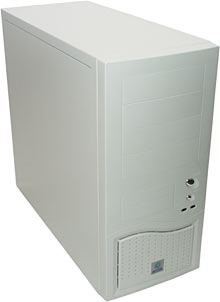
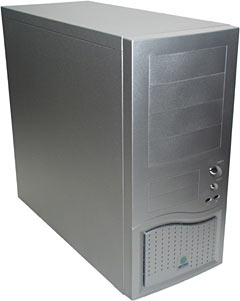
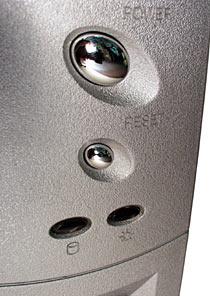
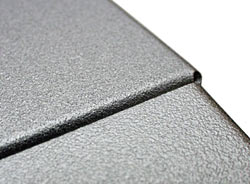
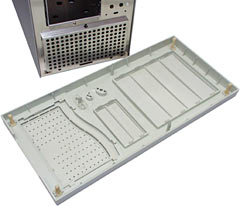
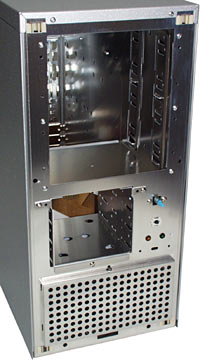
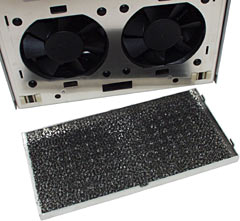
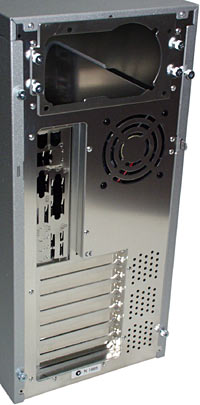
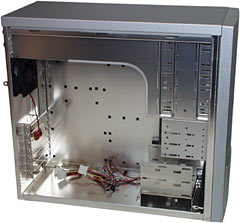
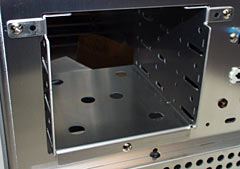

![[SecureWebs]](images/sw.gif)